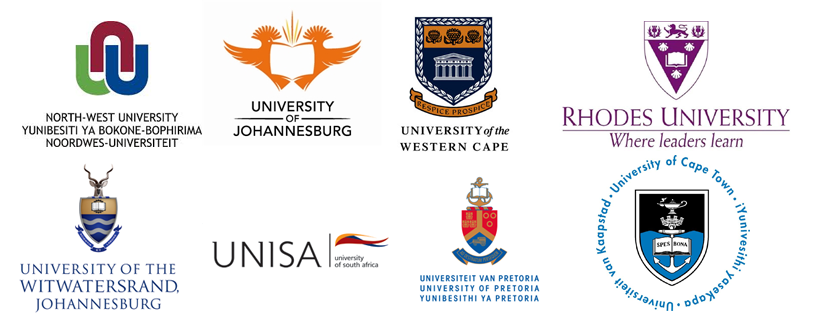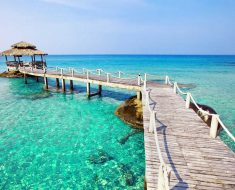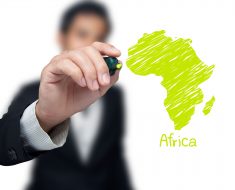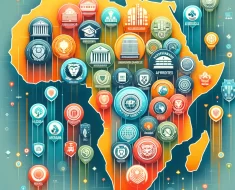Tanzania, the largest country in East Africa, includes the spice islands of Zanzibar, Pemba, and Mafia and contains Africa’s highest point—Kilimanjaro, at 5,895 meters (19,340 feet). Kilimanjaro, a dormant volcano, is snowcapped even though it is near the Equator. The African population consists of more than 120 ethnic groups.
- Tanzania is just a little bit more than twice the size of California.
- Over 120 languages are spoken in Tanzania. Most of these are Bantu languages, a category of over 535 languages and dialects that are spoken throughout Africa.
- Mpingo trees (a.k.a. Africa blackwood trees, commonly seen in Tanzania) are the most expensive hardwood tree in the world.
- The world’s earliest human skull was found in the Olduvai Gorge in Tanzania.
- Tanzania has the largest concentration of wildlife animals per square kilometer, with more than 4 million wild animals and representatives of 430 species and subspecies.
- Once upon a time, the ancestors of the wild elephants that live in Tanzania today didn’t roam on the land, they swam in the water! Dugongs were sea cows that lived in Tanzania in sheltered waters 55 million years ago. They grew about 3.5 meters in length and lived to be about 70 years old.
- Mount Kilimanjaro is located in Tanzania. At 19,341 feet above sea level, it is the largest mountain in Africa.
- Tanzania shares it national anthem with South Africa and Zimbabwe. It’s titled “Mungu Ibariki Afrika” (God Bless Africa) and was composed by Enock Sontonga.
- Tanzania is divided into 26 regions (mikoa), 21 on the mainland, 3 on Zanzibar Island and 2 on Pemba Island. These are further divided into 99 districts (wilaya)! That’s a lot of parts and pieces to divide a socialist country into. The stacks of paper must be huge.
- Tanzania is the home of the coconut crab. This crab, the largest crab in the world (and reportedly one of the most delicious), can be found on Chumbe Island of Zanzibar.
Fast Facts About Tanzania
- Population: 36,481,000
- Capital: Dar es Salaam (administrative); 2,683,000—Dodoma (legislative); 155,000
- Area: 945,087 square kilometers (364,900 square miles)
- Language: Kiswahili, Kiungujo, English, Arabic, many local languages
- Religion: Christian, Muslim, indigenous beliefs
- Currency: Tanzanian shilling
- Life Expectancy: 45
- GDP per Capita: U.S. $600
- Literacy Percent: 78
- Tanzania has the most expensive hardwood tree in the world; the Mpingo trees, also known as the African Blackwood trees.
- The earliest human skull in the world was discovered in Olduvai Gorge in Tanzania
- With more than 4 million wild animals in its periphery, Tanzania has the largest concentration of animals per square kilometer, in the world.
- And talking about wild, 30% of country’s area is occupied with National Parks, with 12 parks, 13 nature reserves, and 38 protected areas.
- The highest free standing mountain in the world, Mt. Kilimanjaro, is located in Tanzania. It is also the highest mountain in Africa.
- Countries share food, flora and fauna, and several other things. But have you heard of any country that shares its national anthem? Tanzania does. With South Africa and Zimbabwe.
- In the Zanzibar archipelago of Tanzania, one can find the largest crab in the world; the coconut crab. Said to be the most delicious as well. Attention all sea food fanatic!
- The Ruaha National Park is the home to largest population of wild elephants in all of Eastern Africa.
- Tanzania also houses the world’s largest volcanic crater, Ngorongoro, with a diameter of 19kms and is 600m deep.
- Remember Freddie Mercury? Who doesn’t?! The lead vocalist of the English band ‘Queen’ is a Tanzanian by birth and was born in the archipelago of Zanzibar, in Stone Town. And, by the way, his real name is Farrokh Bulsara! That’s something you probably must have known.
- Tanzania has two capital cities. Dar es Salaam (the administrative capital) and Dodoma city (the legislative capital) where its parliament sits.
- Have you ever seen a lion climbing trees? May be on television. Well, what you saw was a shot from the Lake Manyara National Park; the home to world’s only tree climbing lions.
Tanganyika, a British-controlled UN trust territory, gained independence in 1961; and Zanzibar, a British protectorate with an Arab population, became independent in 1963. Tanganyika and Zanzibar united to form Tanzania in 1964. Until resigning as president in 1985, independence leader Julius K. Nyerere guided two decades of socialism—adapted to the ujamaa policy of village farming. A multiparty system was established in 1992 after a constitutional amendment.
Some 80 percent of Tanzanians farm or fish at subsistence levels; in many areas tse-tse fly infestation hampers successful animal husbandry. Deteriorating roads and railways and high energy costs are major problems. The Ngorongoro Crater and Serengeti National Park are rich in wildlife, although poaching endangers some species. Tourism remains important. Dar es Salaam is the administrative capital, but Dodoma is the designated future capital and current home to Tanzania’s legislature.
Tanzania Economy
- Industry: Agricultural processing (sugar, beer, cigarettes, sisal twine), diamond and gold mining, oil refining
- Agriculture: Coffee, sisal, tea, cotton; cattle
- Exports: Gold, coffee, cashew nuts, manufactures, cotton
Tanzania People & Culture
Tanzania’s population includes around 120 different African tribal groups. The largest group is the Sukuma, who live in the north-western part of the country, south of Lake Victoria.The country’s earliest people were hunters and gatherers, who inhabited the land as far back as5000BC. Around 800AD, traders moved to the country from India, Arabia and Persia (present day Iran), creating a diverse mix of peoples and cultures. Today, about 90 percent of Tanzanians live in the rural areas and live off what they can grow on the land. In more recent years, however, people have started to migrate from the countryside to developing towns and cities.
Air Tanzania
The Flag Carrier: Wings of the Kilimanjaro
Air Tanzania Corporation (ATC) the Tanzanian flag-carrier, was established on 11 March, 1977, to operate the services suspended following the brake up of East African Airways (EAA), which was owned jointly by Tanzania, Kenya and Uganda.
In the initial moment, the airline leased one Douglas DC-9-32 5Y-ALR from Kenya Airways and one Boeing 707-331 YN-BWL (exN762TW) from Areo Nica. Regular and domesic flights followed by useing Boeings 737-200s and Fokkker F27s and adding de Havilland Twin Otters to its fleet for domestic services from Kilimanjaro.
The fleet was gradually upgraded by 2 no Boeing 737-200s, 4 no Fokker F27s and 4 no DHC 6 Twin Otter. Due to decreased traffic, two of the F27s (reg. unknown)were removed from services in 1981, but were returned two years later only to be removed again in 1984. The airline leased a single Boeing 767-200 1991/1992 from Ethiopian Airlines but this aircraft was to large and the airline had to dispose it. The carrier also leased a McDonnell Douglas MD-83, G-BNSA during 1989.
Tanzania Location
Tanzania officially the United Republic of Tanzania (Swahili: Jamhuri ya Muungano wa Tanzania), is a country in East Africa within the African Great Lakes region. It is bordered by Kenya and Uganda to the north; Rwanda, Burundi, and the Democratic Republic of the Congo to the west; Zambia, Malawi, and Mozambique to the south; and the Indian Ocean to the east. Kilimanjaro, Africa’s highest mountain, is in northeastern Tanzania.
Tanzania’s population of 51.82 million (2014) is diverse, composed of several ethnic, linguistic, and religious groups. Tanzania is a presidential constitutional republic, and since 1996, its official capital city has beenDodoma, where the President’s Office, the National Assembly, and some government ministries are located. Dar es Salaam, the former capital, retains most government offices and is the country’s largest city, principal port, and leading commercial centre.
Holidays in Tanzania
| Date | Weekday | Holiday name | Holiday type |
|---|---|---|---|
| Jan 1 | Friday | New Year’s Day | Public Holiday |
| Jan 12 | Tuesday | Zanzibar Revolution Day | Public Holiday |
| Mar 20 | Sunday | March equinox | Season |
| Mar 25 | Friday | Good Friday | Public Holiday |
| Mar 27 | Sunday | Easter Sunday | Observance |
| Mar 28 | Monday | Easter Monday | Public Holiday |
| Apr 7 | Thursday | Karume Day | Public Holiday |
| Apr 26 | Tuesday | Union Day | Public Holiday |
| May 1 | Sunday | Worker’s Day | Public Holiday |
| May 8 | Sunday | Mothers’ Day | Observance |
| Jun 20 | Monday | June Solstice | Season |
| Jul 7 | Thursday | Saba Saba | Public Holiday |
| Jul 7 | Thursday | Eid el Fitri | Public Holiday |
| Aug 8 | Monday | Peasants’ Day | Public Holiday |
| Sep 13 | Tuesday | Eid el Hajj | Public Holiday |
| Sep 22 | Thursday | September equinox | Season |
| Oct 14 | Friday | Mwalimu Nyerere Day | Public Holiday |
| Dec 9 | Friday | Republic Day | Public Holiday |
| Dec 12 | Monday | Prophet’s Birthday | Public Holiday |
| Dec 21 | Wednesday | December Solstice | Season |
| Dec 24 | Saturday | Christmas Eve | Observance |
| Dec 25 | Sunday | Christmas Day | Public Holiday |
| Dec 26 | Monday | Boxing Day | Public Holiday |













